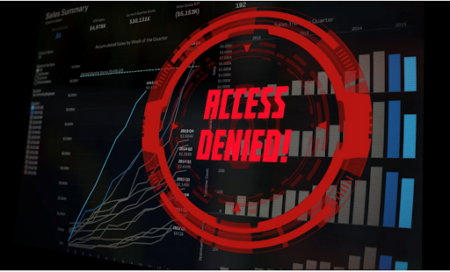3 April 2025
By Roger Kennedy
roger@TheCork.ie

Discover how intelligent alerts in school security camera systems help security personnel identify potential threats and take timely action to ensure campus safety.
The Role of Intelligent Alerts in School Security Camera Systems
In today’s increasingly complex and safety-conscious world, ensuring the security of educational institutions is a top priority. With the rise in concerns about school safety, including incidents like bullying, theft, and violence, schools are increasingly relying on advanced security solutions to protect students, staff, and visitors. School security camera systems play a critical role in monitoring and maintaining campus safety. But, the sheer volume of footage these systems generate can often be overwhelming. This is where intelligent alerts come into play.
Intelligent alerts, powered by AI and advanced analytics, are transforming the way security personnel monitor school premises. These alerts not only enhance the effectiveness of school camera systems but also enable a more proactive approach to campus security. By helping security teams quickly identify potential threats, intelligent alerts allow for faster response times, potentially preventing incidents before they escalate.
In this article, we’ll explore how intelligent alerts function within school security camera systems, the key benefits they offer, and why they are an essential component of modern school safety strategies.
What Are Intelligent Alerts?
Intelligent alerts are notifications generated by school camera systems equipped with artificial intelligence (AI) or machine learning capabilities. These alerts are designed to automatically identify unusual activities or events, such as unauthorized access to restricted areas, abnormal movement patterns, or other behaviors that may pose a security risk. Instead of manually reviewing hours of surveillance footage, security personnel are notified instantly when something potentially threatening occurs.
These alerts can be configured to address specific concerns or scenarios, such as:
- Intruder detection: When someone enters a restricted area or trespasses onto the school premises.
- Suspicious behavior: If a person is loitering or moving in a manner that appears abnormal.
- Crowd monitoring: When a crowd forms unexpectedly in one area, signaling a possible altercation or disturbance.
- Abandoned objects: Detecting when items are left unattended in areas where they shouldn’t be, which could signal a security threat or emergency.
By using intelligent alerts, security teams can focus on the most pressing concerns, significantly reducing the time spent reviewing video footage.
How Intelligent Alerts Enhance School Security
1. Proactive Threat Detection and Faster Response
One of the main benefits of intelligent alerts is that they enable a proactive approach to security. Rather than waiting for an incident to unfold or for someone to report it, intelligent alerts provide real-time notifications to security personnel as soon as a potential threat is detected.
For example, if a person enters a restricted area, such as a teacher’s lounge or a secure storage room, the system can immediately trigger an alert to inform security. With this information, security staff can take immediate action, preventing further escalation of the situation.
Real-Time Monitoring and Alerts allow security personnel to respond quickly to:
- Unauthorized Access: If a person tries to enter a secured area, security is instantly notified, reducing the risk of potential breaches.
- Violence or Fights: If the system detects aggressive movements or physical altercations between students, security personnel are immediately alerted to intervene.
2. Reducing Human Error and Enhancing Accuracy
While traditional surveillance systems often rely on human operators to monitor footage, intelligent alerts drastically reduce the margin for human error. Security personnel may not always be able to observe every corner of a large campus, especially if they are managing multiple video feeds. However, intelligent alerts provide an automated way to highlight areas that require attention.
Advanced AI camera systems can analyze video footage for suspicious activity, such as a person walking at unusual hours or lingering around entrances or exits. When combined with motion detection and facial recognition, these systems can alert security teams to individuals who may pose a threat. This accuracy helps ensure that no potential incidents are overlooked.
3. Preventing False Alarms
One of the biggest challenges with traditional surveillance systems is the occurrence of false alarms. For instance, a camera might trigger an alert simply because of an animal crossing the yard or a student walking through a hallway. Intelligent alerts reduce false alarms by using sophisticated algorithms that can differentiate between normal and abnormal behavior.
For example, intelligent systems can ignore regular movements, such as students walking between classes or staff members entering buildings, while focusing on irregular activities, such as loitering or individuals entering unauthorized areas. This minimizes distractions for security personnel, allowing them to focus on the most important events.
4. Improving Situational Awareness
Intelligent alerts enhance situational awareness by providing security teams with a clear understanding of what is happening across the campus in real-time. The integration of school security cameras with intelligent alert systems allows security personnel to not only monitor activity but to act on it immediately, reducing delays and improving campus safety.
Through real-time monitoring, security teams can receive detailed information on:
- Footage of incidents: For example, an alert about suspicious activity will be accompanied by video footage, enabling security to assess the situation immediately.
- Priority areas: Instead of manually reviewing hours of footage, the system highlights areas that require immediate attention, helping security personnel prioritize their response.
This streamlined monitoring process ensures that security teams are always aware of the situation, allowing them to act swiftly to diffuse or prevent incidents.
5. Long-Term Data Analysis and Incident Reporting
Intelligent alert systems are not only valuable in the short term but also provide long-term benefits. The data generated by these systems can be analyzed to identify patterns and trends over time. For example, by reviewing the times and locations where alerts were triggered most frequently, schools can identify areas that need further security measures, such as increased camera coverage or staff presence.
Furthermore, intelligent alerts can aid in creating incident reports and improving safety protocols. If an event occurs on campus, security can easily access the relevant footage and data associated with the alert, enabling a thorough investigation. This is essential for accountability and ensuring that the appropriate actions are taken after an incident.
Best Practices for Implementing Intelligent Alerts in School Security Systems
While intelligent alerts offer numerous benefits, their success relies on effective implementation. Here are some best practices for integrating intelligent alerts into your school’s security system:
1. Customize Alert Settings
Ensure that alert thresholds are set based on your school’s specific needs. For example, set up alerts for suspicious behavior, restricted area access, or crowd detection, depending on the school’s layout and security priorities. Customization reduces false alerts and ensures that security staff receives only the most relevant notifications.
2. Train Security Personnel
Even with intelligent alerts, security teams need to be trained on how to respond to different types of notifications. Regular training will ensure that staff can efficiently address security incidents when they occur.
3. Integrate with Other Security Systems
To maximize the effectiveness of intelligent alerts, integrate them with other security systems, such as access control and emergency notification systems. This ensures that security personnel have access to comprehensive data, helping them make informed decisions during a crisis.
4. Review Data and Continuously Improve
Regularly analyze data from intelligent alerts to identify trends and potential weaknesses in your security infrastructure. By using this data, you can continuously improve your security measures and ensure that your school’s safety protocols evolve with changing needs.
Conclusion
Intelligent alerts are revolutionizing school security camera systems, offering a smarter, more efficient way to monitor campuses and protect students and staff. By leveraging AI-driven analytics, real-time notifications, and customized alert settings, schools can take a proactive approach to campus safety, quickly identifying potential threats and minimizing response times.
With school security cameras equipped with intelligent alert capabilities, educational institutions can improve their situational awareness, reduce false alarms, and ensure a safer, more secure learning environment for everyone. As the technology continues to advance, the role of intelligent alerts in enhancing school security will only become more important, providing a critical tool for modern safety strategies.


